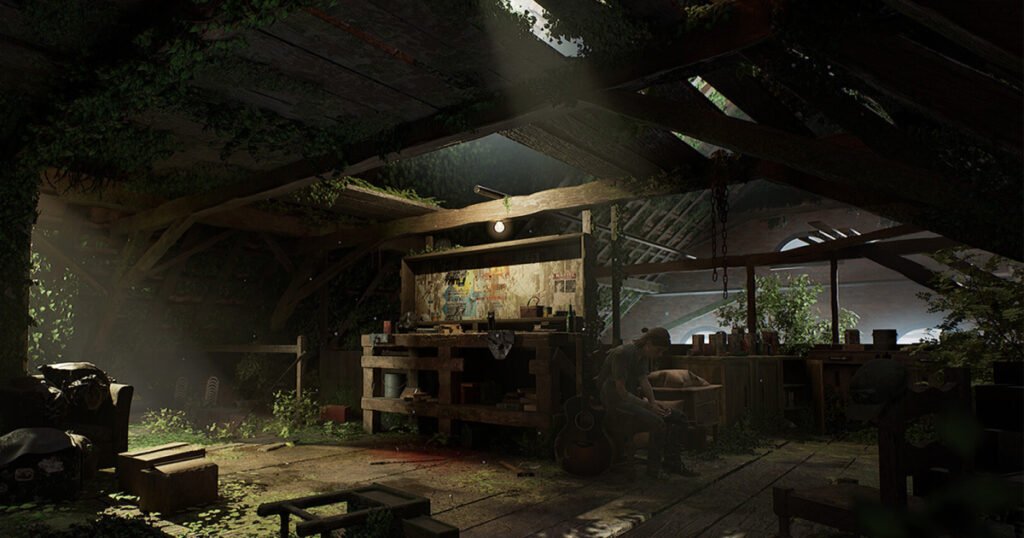In video games, lighting is more than a tool for visibility: it’s also known as a silent storyteller. Through light, shadow, and color, developers can create emotion, direct attention, and communicate themes without words. A dimly lit hallway might spark fear or uncertainty, while a sunlit field evokes peace and relief. These visual cues shape how players interpret the world around them, guiding both their emotions and actions.
Lighting also builds narrative atmosphere. For example, The Last of Us (Image below) uses warm, golden light during moments of hope and harsh, desaturated tones in scenes of despair. Similarly, Journey relies on bright, radiant illumination to symbolize progress and spiritual awakening. Each shift in tone subtly reflects the story’s emotional rhythm.

Beyond mood, lighting plays a practical storytelling role. Designers use contrast and color to highlight important paths, objects, or story elements essentially “guiding” players without intrusive instructions. A faint glow on a door or a beam of light cutting through fog tells players where to look next.
Ultimately, lighting connects visual design with emotional storytelling. It allows players to feel the story, not just see it. The next time you play a favorite game, notice how the light changes between moments of calm and tension. You might find that every shadow, hue, and reflection has something to say.
Stay tuned next week for more content!
